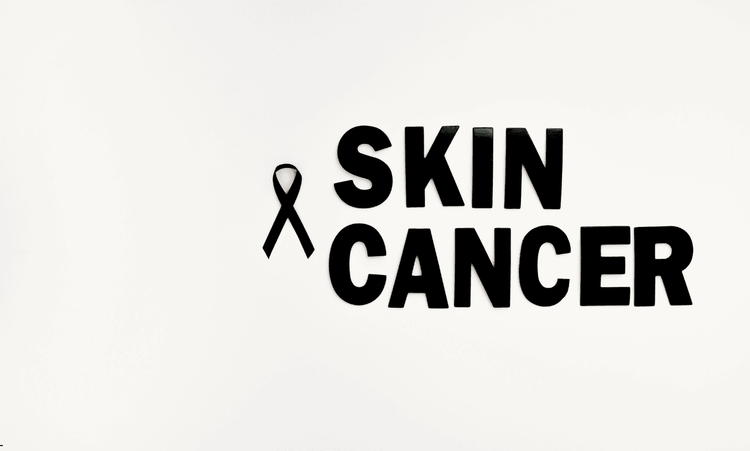Skin cancer affects millions of people worldwide each year. Recognizing early warning signs can save lives and prevent serious complications. Many people don't know what to look for when examining their skin.
Understanding the appearance of different skin cancers helps with early detection. This knowledge empowers you to take action when something looks suspicious. Regular skin checks become more effective when you know the warning signs.
What is skin cancer?
Skin cancer develops when skin cells grow abnormally and uncontrollably. These cells can form tumors that may spread to other parts of the body. The condition occurs most often in areas exposed to UV radiation.
Normal skin cells have a specific lifecycle and replacement pattern. Cancer disrupts this process, causing cells to multiply without proper control. This abnormal growth creates visible changes on the skin's surface.
Three main types of cells in the skin can become cancerous. Basal cells sit at the bottom of the epidermis. Squamous cells form the outer layer of skin. Melanocytes produce the pigment that gives skin its color.
Types of skin cancer
Basal Cell Carcinoma
Basal Cell Carcinoma represents the most common form of skin cancer. This type grows slowly and rarely spreads to other body parts. It typically appears on sun-exposed areas like the face, neck, and arms.
Nodular basal cell skin cancer looks like a pearly, dome-shaped bump. The surface may have visible blood vessels running through it. Sometimes these growths develop a central depression or ulcerated area.
Superficial basal cell skin cancer appears as a red, scaly patch. This type often gets mistaken for eczema or other skin conditions. The edges may be slightly raised with a pearl-like border.
Pigmented basal cell skin cancer contains brown, black, or blue pigment. People sometimes confuse this type with melanoma or moles. However, it still maintains the characteristic pearly appearance at the edges.
Morphoeic basal cell skin cancer looks like a scar or indented area. This type has poorly defined borders and feels firm to touch. The skin texture appears waxy or shiny in the affected region.
Squamous Cell Carcinoma
Squamous cell skin cancer develops in the flat cells of the skin's surface. This type grows faster than basal cell carcinoma and can spread. Cutaneous squamous cell carcinoma often appears on sun-damaged skin.
These cancers typically look like thick, rough, scaly red patches. The surface may crust over or bleed when touched. Some squamous cell cancers appear as raised growths with a central depression.
Actinic keratosis serves as a precursor to squamous cell carcinoma. These solar keratoses appear as rough, scaly patches on sun-exposed skin. They feel sandpaper-like and may be red, brown, or flesh-colored.
Melanoma
Melanoma develops in the pigment-producing cells called melanocytes. This type spreads quickly and can be life-threatening if not caught early. It may appear anywhere on the body, including areas not exposed to sun.
The ABCDE rule helps identify suspicious moles that could be melanoma:
- Asymmetry: One half doesn't match the other.
- Border: Edges are jagged, notched, or blurred.
- Color: Varying colors like black, brown, red, white, or blue.
- Diameter: Larger than 6mm (a pencil eraser).
- Evolution: Changes in shape, size, or color over time.
Any mole that looks different from others may be the "Ugly Duckling." New symptoms like itching, bleeding, or pain require evaluation.
Other Types
Merkel Cell Carcinoma appears as a fast-growing, painless nodule. This rare cancer typically affects older adults on sun-exposed areas. The immune system plays a role in preventing this aggressive cancer.
Kaposi's sarcoma creates purple, red, or brown patches or nodules. HIV infection increases the risk of developing this cancer. It commonly affects the lower legs and feet.
Dermatofibrosarcoma protuberans grows slowly as a firm, raised nodule. This rare cancer often appears on the trunk or limbs. The skin may look bruised or discolored around the growth.
How common is skin cancer?
Skin cancer ranks as the most frequently diagnosed cancer in the United States. More than 5 million cases receive treatment annually across the country. One in five Americans will develop skin cancer during their lifetime.
Non-melanoma skin cancer affects more people than melanoma. Basal cell carcinoma accounts for about 80% of all skin cancers. Squamous cell carcinoma makes up most of the remaining cases.
Melanoma represents only 1% of skin cancers but causes most deaths. Early detection dramatically improves survival rates for all types. The five-year survival rate exceeds 99% when caught early.
Symptoms and Causes
What are the signs and symptoms of skin cancer?
Early skin cancer signs often appear subtle and easily overlooked. New growths or changes to existing moles require medical evaluation. Sores that don't heal within several weeks need professional assessment.
Persistent itching, tenderness, or pain in a skin lesion warrants attention. Bleeding from moles or growths raises immediate concern. Changes in skin texture, such as roughness or scaliness, indicate problems.
Swollen lymph nodes near a suspicious skin lesion suggest spreading. Any growth that differs significantly from surrounding skin needs examination. Multiple colors within a single lesion require immediate medical evaluation.
What causes the condition?
UV radiation from the sun's rays represents the primary cause of skin cancer. Tanning beds expose skin to concentrated ultraviolet light that damages cells. Cumulative sun exposure over years increases cancer risk significantly.
Fair skin tone provides less natural protection against UV rays. People with light hair and eyes have higher susceptibility. Those who burn easily rather than tan face increased risk.
Immune system suppression from medications or conditions elevates cancer risk. Kidney transplant recipients require careful monitoring for skin changes. Certain genetic conditions like Gorlin syndrome predispose to skin cancer.
Previous radiation therapy to skin areas increases future cancer risk. Exposure to certain chemicals or arsenic contributes to development. Family history of skin cancer raises individual risk levels.
How is skin cancer diagnosed?
Healthcare providers perform thorough skin examinations using proper lighting and magnification. They examine the entire body, including areas not typically exposed to sun. A tape measure helps document the size of suspicious lesions.
Dermoscopy allows detailed examination of skin lesions using specialized tools. This technique reveals patterns invisible to the naked eye. Clinical features help distinguish between benign and malignant growths.
Biopsy procedures provide definitive diagnosis by examining tissue under a microscope. Excisional surgery removes the entire suspicious area for analysis. Punch biopsies take small samples from larger lesions.
Pathologists examine tissue samples to determine cancer type and grade. They assess how deeply the cancer has grown into skin layers. This information guides treatment decisions and prognosis discussions.
How is skin cancer treated?
Surgical Options
Surgical excision removes the cancer along with a margin of healthy tissue. This approach works well for most basal cell and squamous cell cancers. The procedure typically occurs in an outpatient setting under local anesthesia.
Mohs surgery removes cancer layer by layer while examining margins microscopically. This technique preserves maximum healthy tissue while ensuring complete removal. It proves especially valuable for cancers on the face or hands.
Non-Surgical Treatments
Cryotherapy uses liquid nitrogen to freeze and destroy cancer cells. This method works well for superficial skin cancers and precancerous lesions. Multiple treatments may be necessary for complete destruction.
Photodynamic therapy combines light-sensitizing drugs with specific wavelengths of light. The treatment selectively destroys cancer cells while sparing healthy tissue. It works particularly well for certain types of non-melanoma skin cancer.
Topical medications can treat some superficial skin cancers effectively. These creams work by stimulating the immune system to fight cancer cells. Treatment typically continues for several weeks with regular monitoring.
What is the outlook for people with skin cancer?
Early-stage skin cancer has excellent cure rates with appropriate treatment. Basal cell carcinoma rarely spreads and has near 100% cure rates. Squamous cell carcinoma caught early also has very favorable outcomes.
Melanoma prognosis depends heavily on the thickness and stage at diagnosis. Thin melanomas confined to the skin surface have excellent survival rates. Advanced melanoma that has spread requires more aggressive treatment approaches.
Regular follow-up care helps detect recurrences or new skin cancers early. Many patients develop multiple skin cancers over their lifetime. Ongoing surveillance becomes a lifelong commitment for high-risk individuals.
When should I see my healthcare provider?
Schedule appointments for any new growths that appear after age 30. Changes to existing moles warrant immediate professional evaluation. Sores that fail to heal within four weeks need medical attention.
Bleeding, itching, or pain in skin lesions requires prompt assessment. Any growth that looks different from your other moles follows the Ugly Duckling rule. Family history of melanoma necessitates regular professional skin examinations.
Annual skin checks benefit everyone, especially those with risk factors. People with fair skin, multiple moles, or sun damage need more frequent monitoring. High-risk individuals may require examinations every three to six months.
Can skin cancer be prevented?
Sun protection represents the most effective prevention strategy available. Apply broad-spectrum sunscreen with SPF 30 or higher daily. Reapply every two hours and after swimming or sweating.
Seek shade during peak UV hours between 10 AM and 4 PM. Wear protective clothing including long sleeves and wide-brimmed hats. UPF clothing provides measured protection against ultraviolet radiation.
Avoid tanning beds entirely, as they significantly increase skin cancer risk. Indoor tanning before age 35 raises melanoma risk by 75%. No amount of artificial tanning is considered safe.
Perform monthly skin self-exams to detect changes early. Use mirrors to examine hard-to-see areas or ask for help. Take photos of suspicious areas to track changes over time.
Vitamin D supplementation can replace the need for sun exposure. Many foods are fortified with this essential nutrient. Blood tests can determine if supplementation is necessary.
Conclusion
Recognizing what skin cancer looks like empowers early detection and treatment. Regular self-examinations combined with professional screenings save lives every year. Understanding the various types helps distinguish concerning changes from normal skin variations.
Prevention through sun protection remains the most effective strategy against skin cancer. Simple daily habits like wearing sunscreen and protective clothing make significant differences. When in doubt about any skin change, seeking professional evaluation provides peace of mind.
The American Cancer Society emphasizes that early detection dramatically improves outcomes for all skin cancer types. Knowledge about warning signs, combined with preventive measures, offers the best protection against this common but often preventable disease.




